The 2023 CONCACAF Central American Cup is well underway. This year’s tournament is the inaugural edition, with teams from across the region competing against each other to be crowned the best team in Central America.
The competition features 18 teams from the region who qualify based on their domestic performance. For the 2023 edition, Costa Rica and Honduras have been awarded an extra place due to Alajuelense and Olimpia reaching the final of the 2022 CONCACAF League, taking the total to 20 teams. The newly formed Central American Cup serves as qualification to the CONCACAF Champions Cup, so there is a lot to play for in this competition.
Costa Rican side Alajuelense will count themselves as one of the favourites alongside Independiente from Panama. However, Real Estelí of Nicaragua have also been performing very well.
In this tactical analysis scout report, we are going to look at three players who have been very impressive with their performances in the competition thus far. We will look at each player’s style and the traits that make them stand out in a region packed with talent. We will also analyse how they fit into their team’s tactics and what they bring to the table from a tactical perspective.
Aarón Suárez
21-year-old Aarón Suárez has been one of the standout players for Costa Rican side Alajuelense during this year’s competition. Suárez is a versatile player, primarily utilised as an attacking midfielder; however, he can also play up front in the false nine role and do an adequate job in the wide areas.
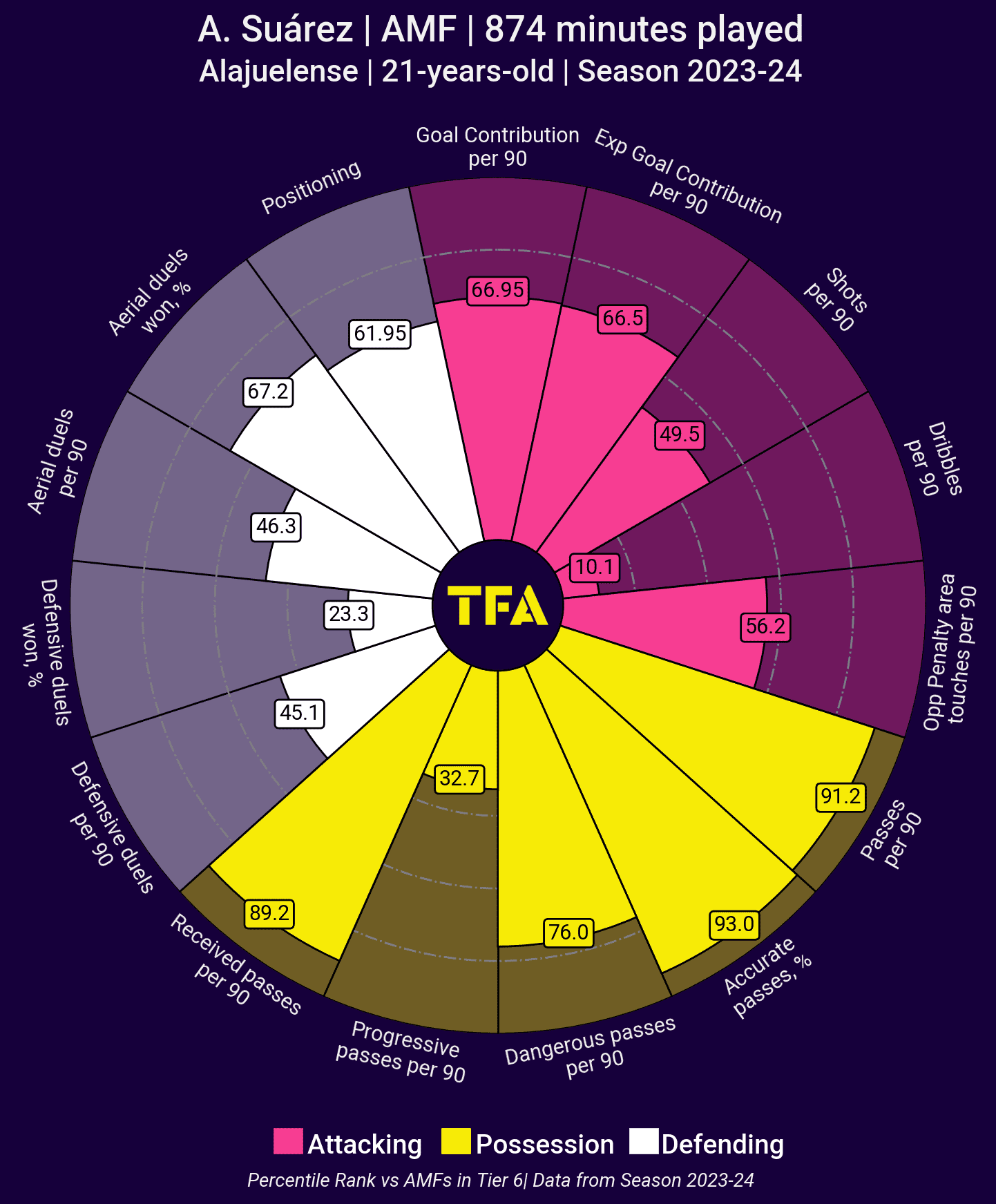
The pizza chart above gives us a good overview of Suárez’s style of play and how well he has performed so far this season for Alajuelense compared to players in the same position and league.
We can immediately notice how highly he ranks in terms of passes per 90 and accurate pass percentage. This suggests that Suárez is mostly reliable when passing the ball and can find his teammates effectively to build or sustain the Alajuelense attack. The attacking midfielder averages 39.38 passes per 90 in all competitions this season and 40 per 90 in the Central American Cup with an 84.1% accuracy rating.
He is also ranking above average regarding goal contributions and expected goal contributions so far this season. We can also see that Suárez does not like to carry the ball too often. From this, we can infer that he will primarily use his passing abilities to link up the play from midfield to attack.
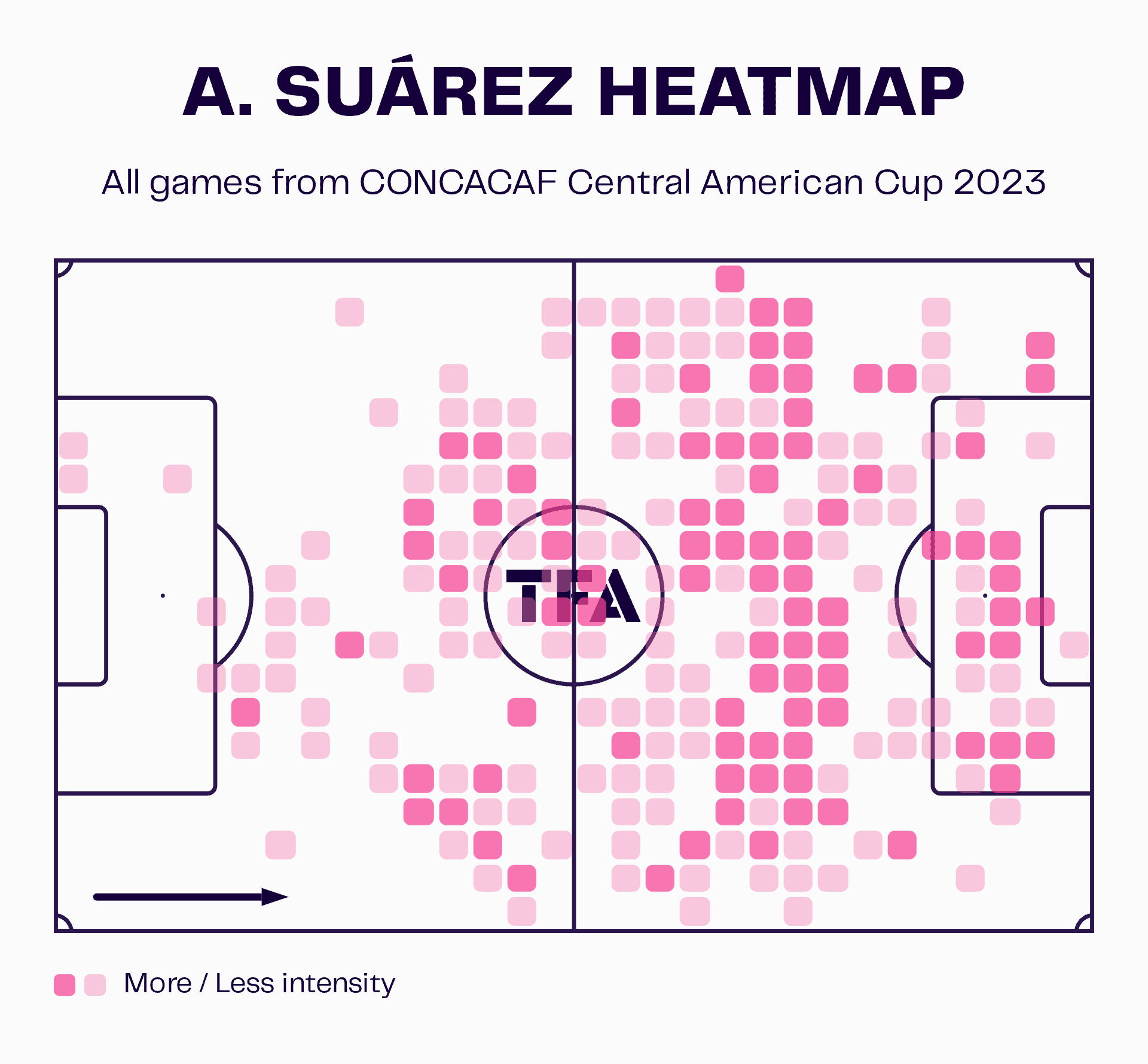
From the heatmap, we can see that Aarón Suárez covers a lot of ground and is very active in various areas of the pitch. He has a remarkable ability to find pockets of space, especially in the half spaces, allowing him to link up play exceedingly well. Moreover, Suárez provides a constant goal threat; he often makes runs in behind the opposition defence, especially when the Alajuelense forward drags defenders out of position by dropping deeper into the midfield area.
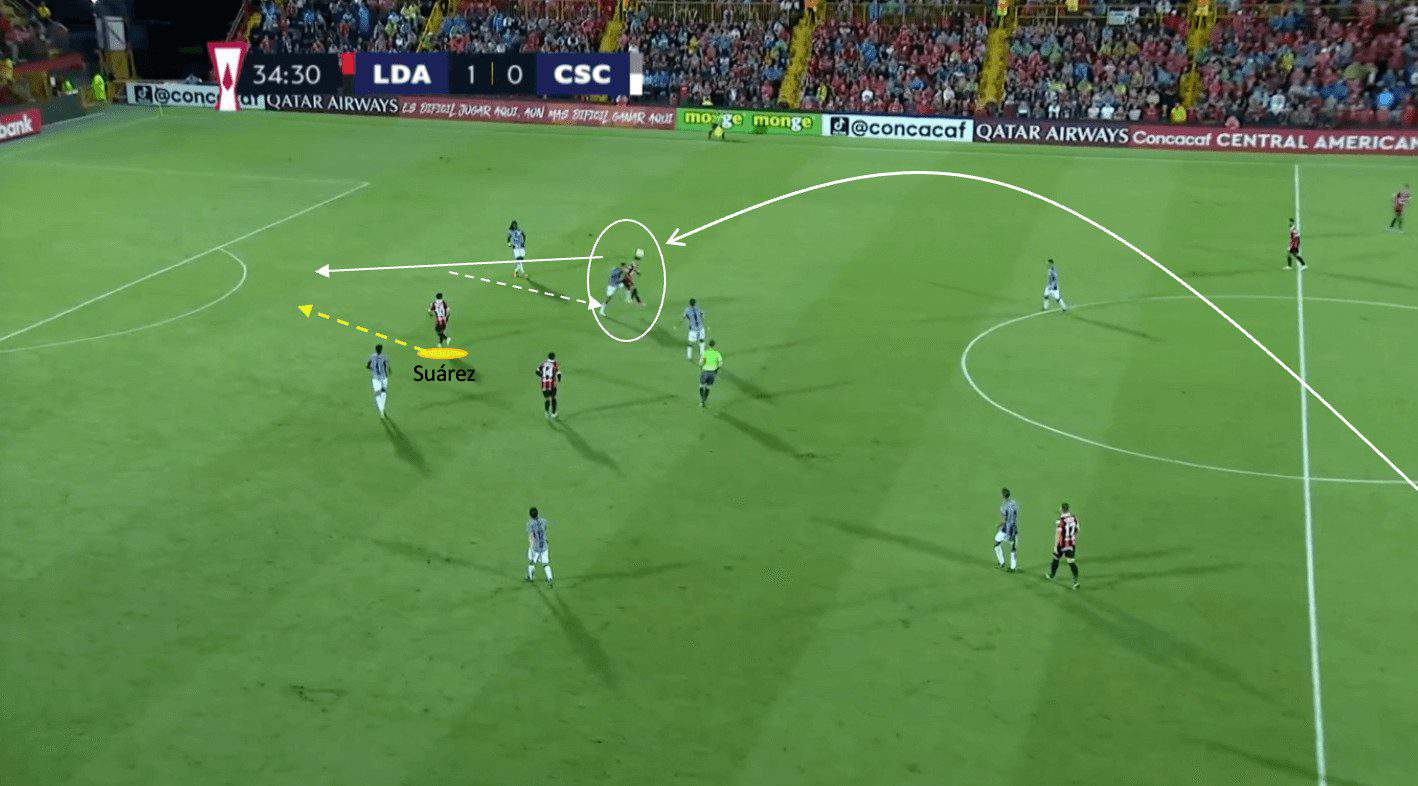
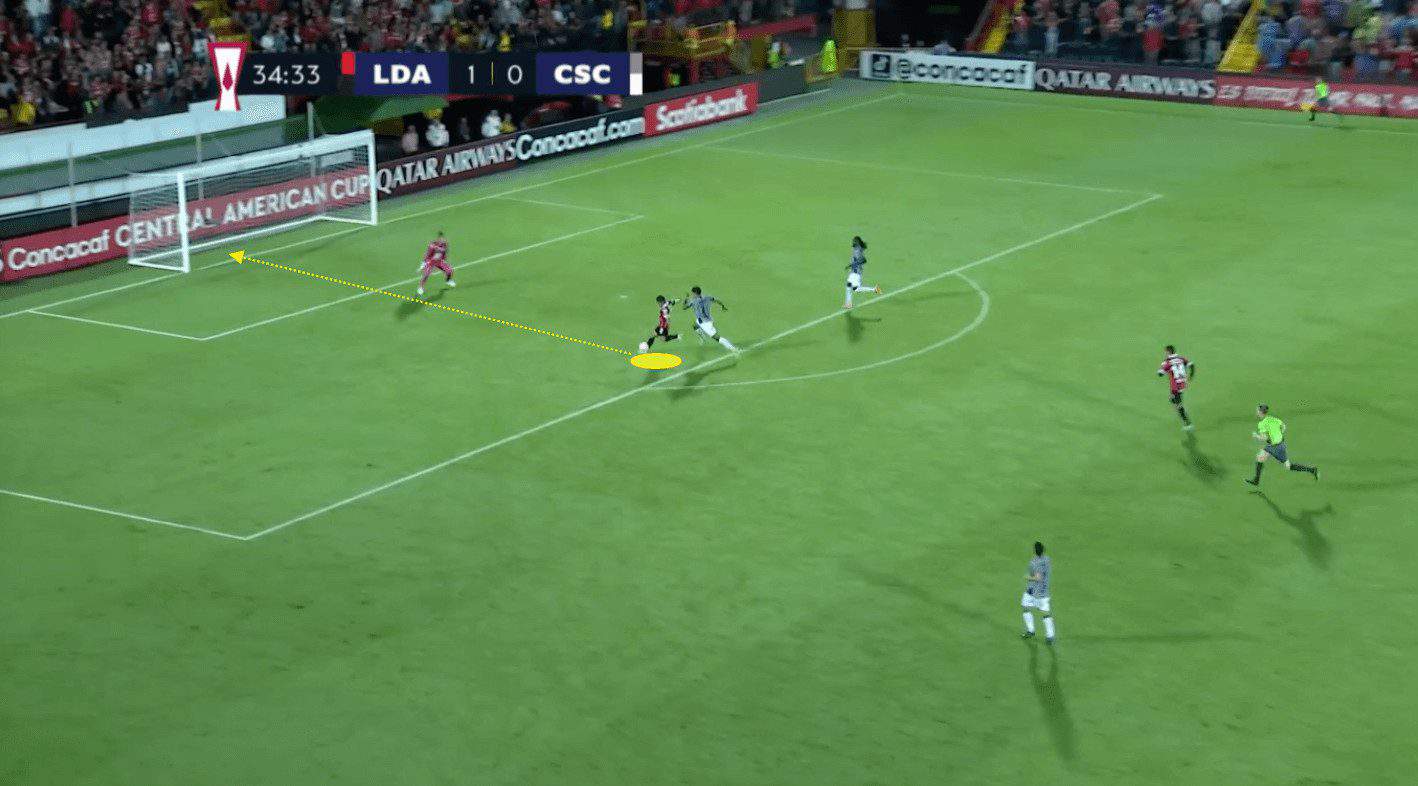
An example of Suárez’s off-the-ball movement can be seen in these two images. The centre-back plays a long ball forward, and the centre-forward, Doryan Rodríguez, drags his marker out of position as he drops deeper to win the ball in the air. This creates space for Suárez to run in behind. The 21-year-old is then able to latch onto Rodríguez’s flick-on and place a shot beyond the goalkeeper using his favoured left foot.
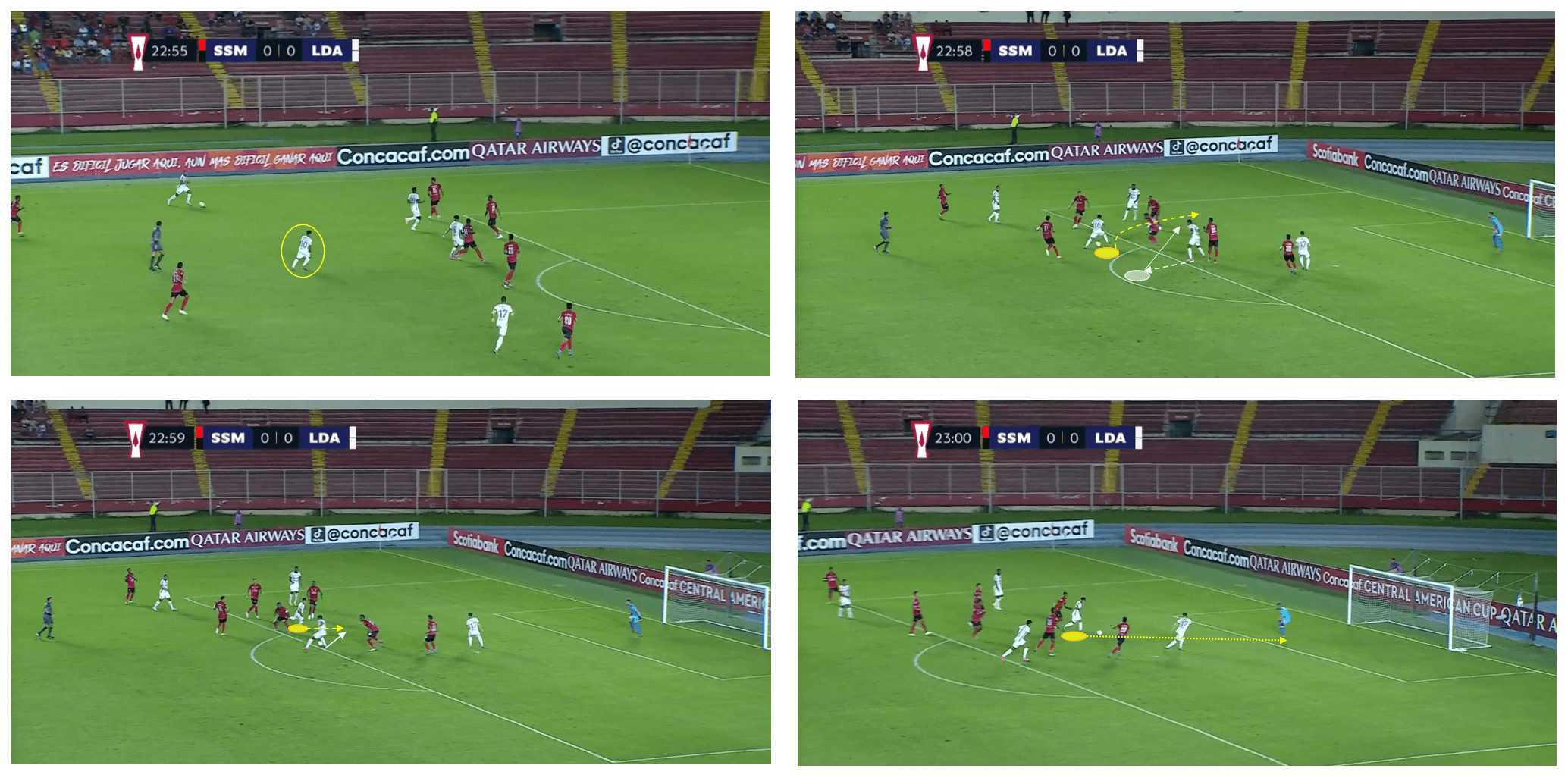
Furthermore, we can see another example of Suárez’s off-the-ball movement and link-up play here. The Costa Rican is wonderfully capable of timing his movements to perfection, making it incredibly difficult for opponents to track his runs or mark him effectively.
In the first image, we can see how he just holds his run for a second, which creates a vast amount of space for himself. Then, Suárez makes a run forward, executes a dummy, and allows the pass to run through to his teammate.
As a result of this, he can make a run in behind the defence. This movement encourages his teammate to play a pass back into his path, which enables Suaréz to execute a first-time shot at goal. This opportunity was created out of Aarón Suaréz’s excellent movement and timing.
Suárez understands how to make subtle movements to create space for himself and allow gaps to emerge in the opposition’s defensive structure. By exploiting these gaps intelligently, the young attacking midfielder can effectively receive the ball in advantageous positions, as we have seen above.
His positioning and close control encourage his teammates to make incisive passes and deliver precise through balls into his path. His strategic manoeuvring can significantly increase the team’s chances of creating goal-scoring opportunities and applying sustained pressure on the opposing defence, ultimately leading to an increased likelihood of scoring goals.
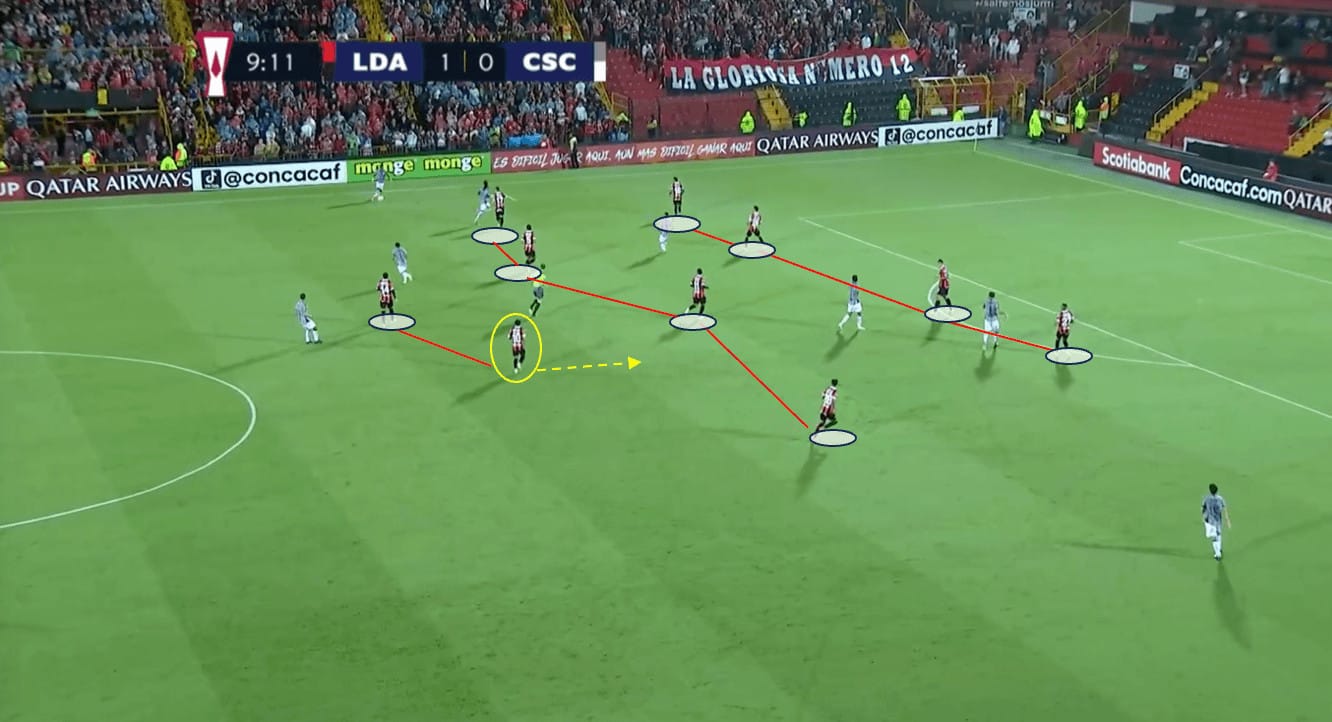
Alajuelense primarily adopts a 4-4-2 structure in the defensive phase, as shown above. They have been operating in a mid-low block during the Central American Cup, looking to retain quite a compact shape and then counterattacking rather quickly upon regaining possession.
Suárez usually forms part of the front two in this structure. However, he occasionally drops back and forms a five-man midfield in a 4-5-1 defensive structure. He is quite a tenacious player and does engage in ground duels; however, his 1.76m frame means he isn’t the tallest and can sometimes be outmuscled by his opponent.
Overall, Aarón Suárez is making a name for himself in Costa Rican football and in the Central American Cup. His impressive form for Alajuelense has had a significant influence on the team’s performances of late, and he looks set to be a key player for them in the future.
Fernán Faerrón
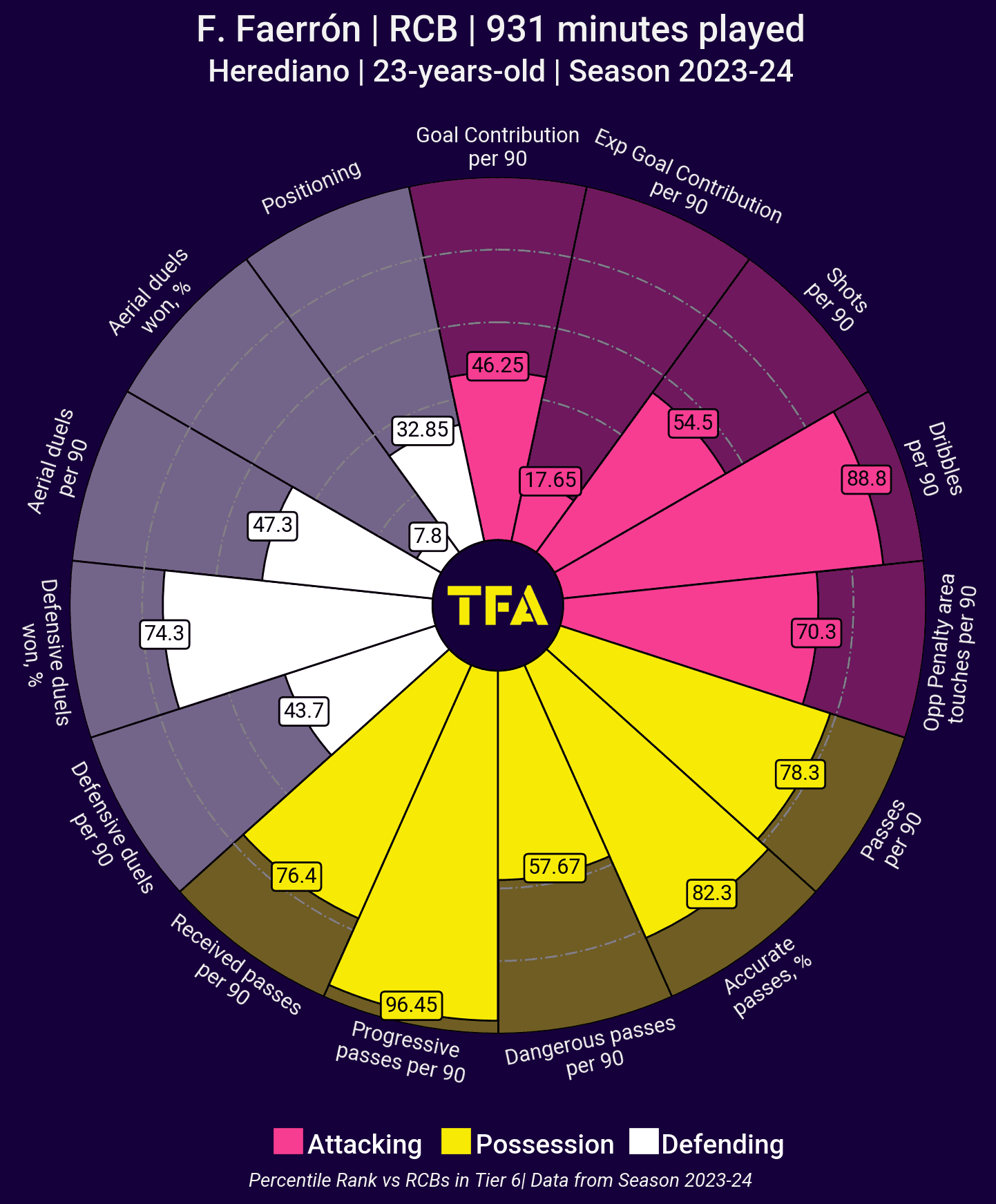
The next player we are going to look at in this scout report is Herediano centre-back Fernán Faerrón. As we can see from the pizza chart, the 23-year-old is very much a ball-playing defender. He mainly plays as the right-sided centre-back, although Herediano switches between a back four and a back three. Faerrón can also play as a right-back, which suits his attacking tendencies.
Faerrón ranks very highly in terms of his passing metrics, especially progressive passes, where he is in the 97th percentile. Having a defender such as Faerrón, who possesses excellent passing and dribbling abilities and can effectively carry the ball out of defence to deliver progressive passes, is an invaluable asset for Herediano’s tactical setup.
This skill set allows them to initiate attacking moves from deep within their own half, enabling the midfielders and forwards to make effective off-the-ball runs, trusting that their centre-back will not only retain possession but also be able to execute an accurate pass to build up the attack.
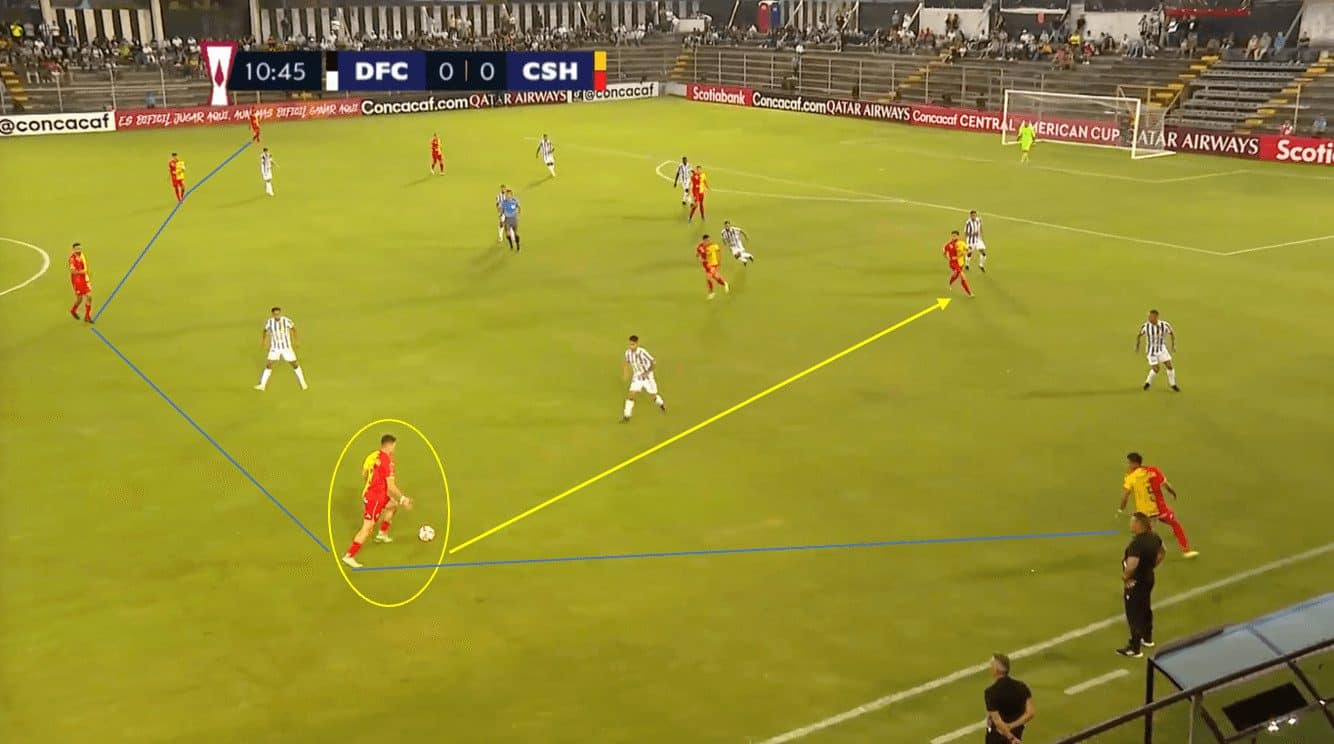
Herediano likes to pin their opponents back in the defensive half when building an attack, as we can see above. This allows Faerrón to venture forward, as teammates will most likely be available to provide cover should he lose possession. Additionally, the fact that the opposition is pinned in means that they will find it difficult to play out and increases the likelihood of Herediano recycling possession and sustaining the attack.
The example above demonstrates how Faerrón likes to play forward passes to the attacking players. He very rarely looks to play a lateral pass, instead preferring to influence the team’s attacking build-up play directly. In the CONCACAF Central American Cup, Faerrón has averaged 5.16 passes to the final third per 90, mostly into the feet of a teammate who can control the ball and either turn and carry it into the penalty area or look to play in a colleague.

Faerrón’s passing abilities are also beneficial when Herediano are defending. In the example above, the opposition has launched a pass forward, looking to counterattack. Faerrón is on hand to ensure that his team can regain possession.
Rather than controlling the ball and then playing a lateral or short pass, the centre-back plays a carefully lofted pass into his teammate in space in midfield. This allows the Herediano midfielder to turn and carry the ball forward, creating an attack for his team.
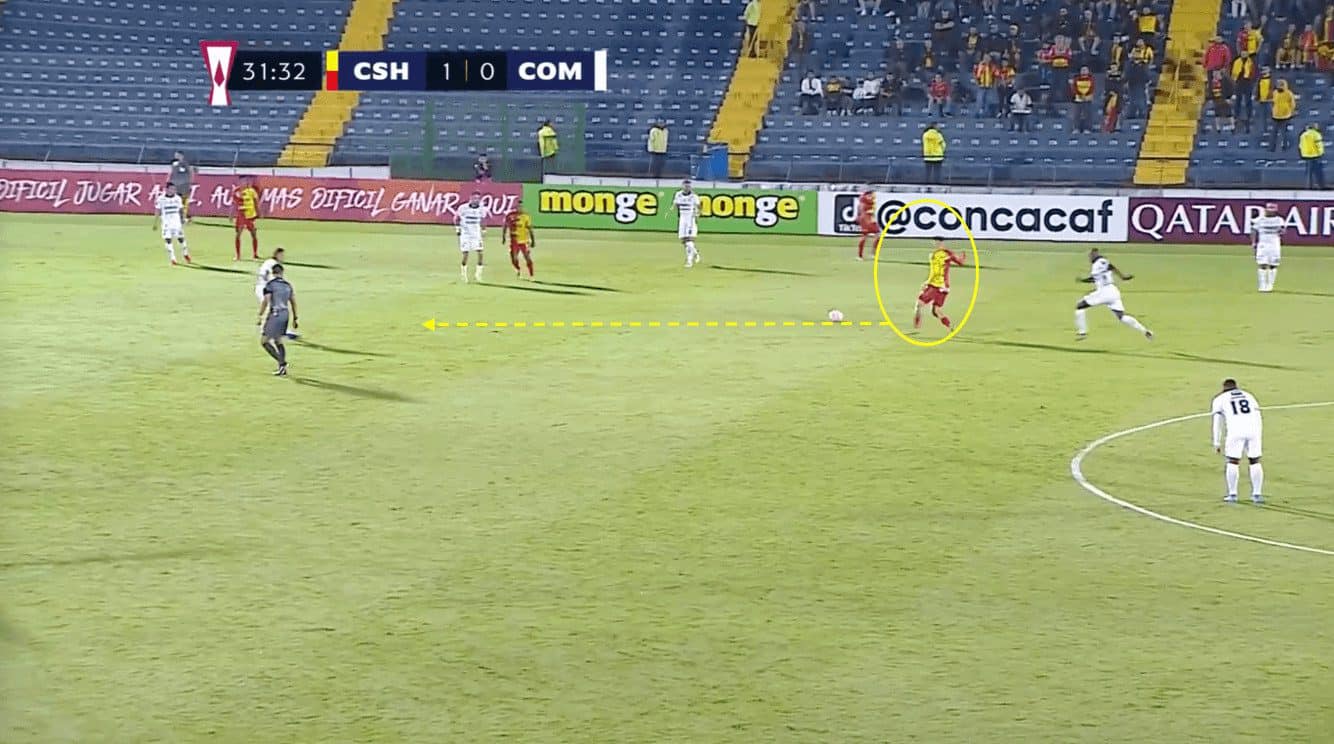
Moreover, we saw on the pizza chart that Fernán Faerrón ranked very highly in terms of dribbling. This is an excellent example of how he gets involved in the attacking play, especially when Herediano are playing with three centre-backs, which means there are covering defenders. Hence, he has the freedom to get forward even more.
Here, he picks up the ball in the Herediano attacking half and looks to drive forward. This can often catch opponents off guard as they are still determining whether to step out of their defensive structure to put in a tackle, the consequence of this being that it could leave a passing lane open for Herediano to exploit.
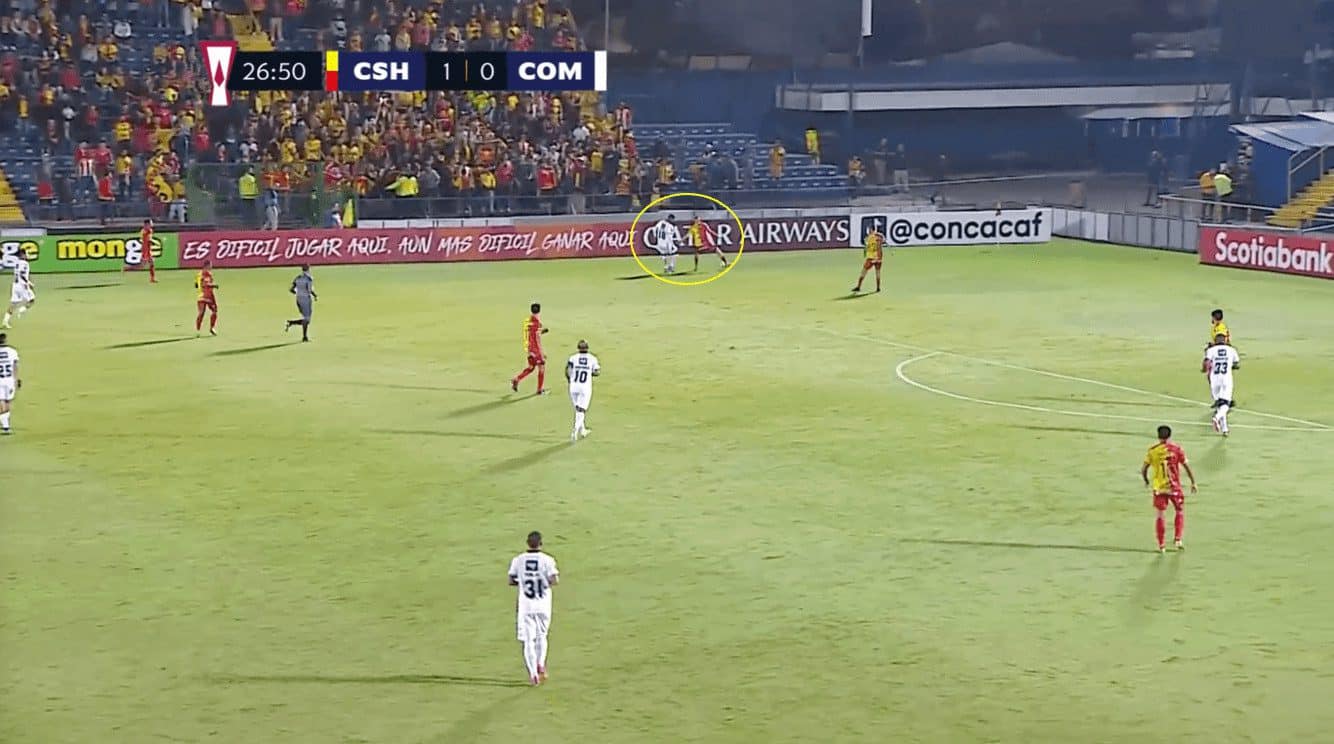
Faerrón is not a defender who goes to ground often; he mostly opts to use his positioning and body orientation to make interceptions or limit the opposition’s attack. Here, we can see the Costa Rican defender using his strength and orientation to ensure he remains between the opponent and the ball, which allows him to recover possession and pass it to a teammate calmly.
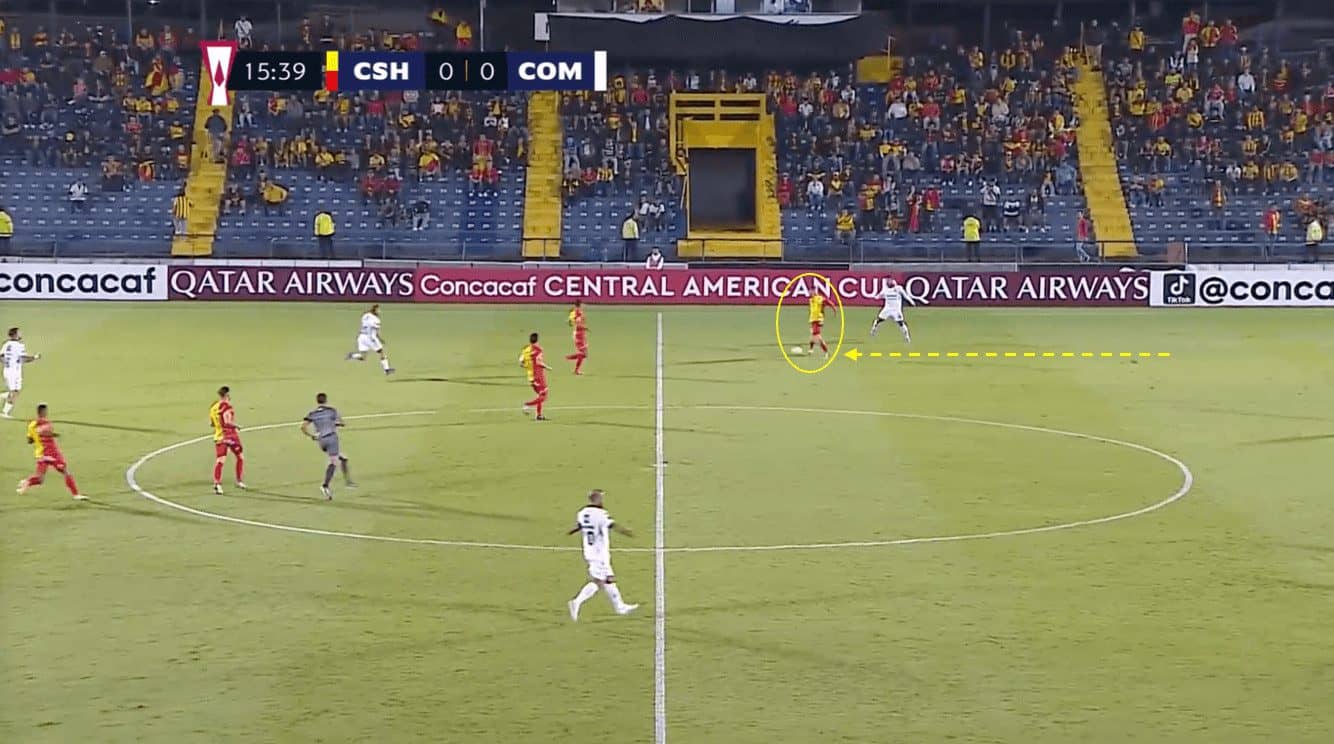
As he has been averaging 4.01 interceptions per 90, it is clear that Faerrón has an excellent reading of the game and is able to ensure he is in the right place at the right time, as we can see above.
The young defender can effectively minimise the risk of committing fouls and conceding dangerous set-piece opportunities by employing a tactically astute approach to defensive play. This maintains the team’s defensive discipline and reduces the likelihood of providing the opposition with goal-scoring chances via set pieces. This proactive defensive approach allows Faerrón to cut off passing lanes, block potential through balls, and limit the attacking options available to the opposition.
Agustín Auzmendi
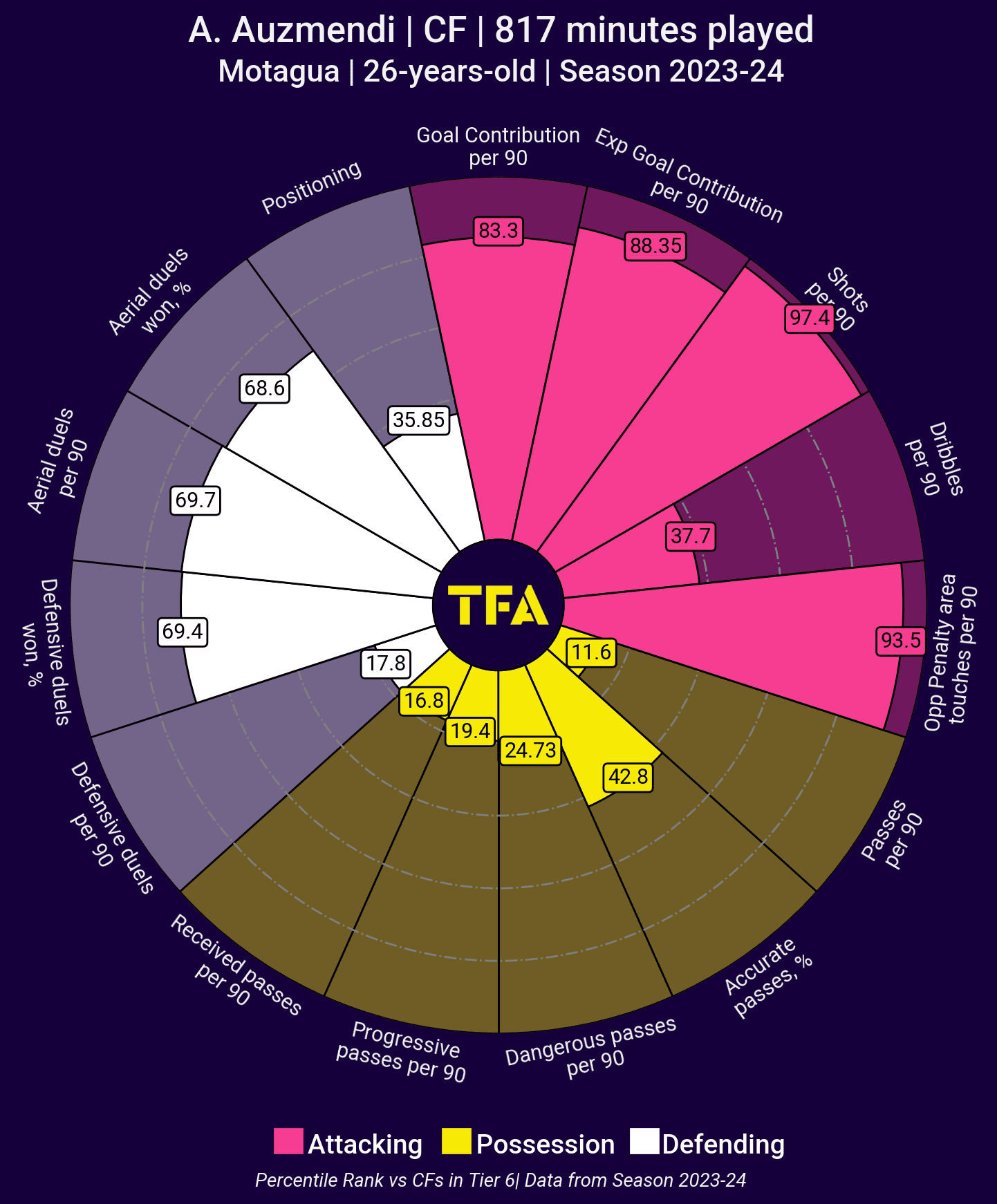
The final player we are going to look at in this scout report is Agustín Auzmendi. The Argentine striker has been lethal for Honduran side Motagua so far this season, as we can see per the chart above. The club haven’t enjoyed the best time in the Central American Cup after being on the receiving end of a 5-1 loss to Alajuelense, but their star striker has stood out and even bagged a hattrick in the first game of the competition.
Auzmendi does not link up play very often, as we can see from his performance in the passing metrics. He is a poacher who ensures he is in the right place at the right time to turn the ball goalwards. He is an incredibly tenacious player who works hard defensively, though.
We can see that the Argentine does well in the aerial battles as he wins most of the aerial duels he engages in. This is especially useful in attack as Motagua looks to play crosses into the box to make good use of Auzmendi’s aerial abilities.
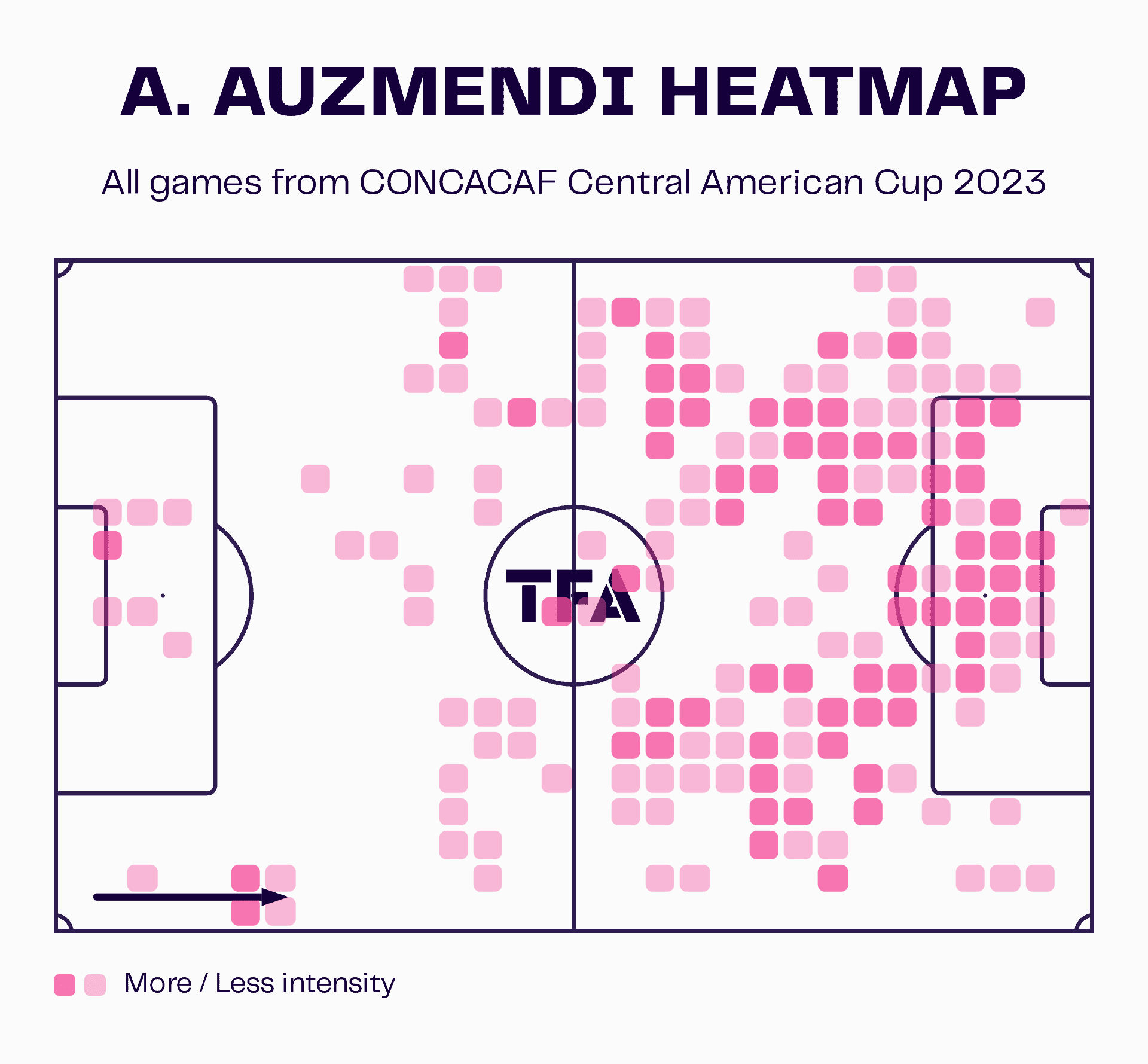
The heatmap shows us where Auzmendi is most active on the pitch during this year’s Central American Cup. He is very active in and around the penalty area, as we would expect from a centre forward. He also likes to drift out into the half spaces to drag opposition defenders with him to create space for teammates making runs from central midfield areas. Additionally, he will make runs off the left wing, often forcing the opposition’s defensive line to drop back, creating space for teammates.
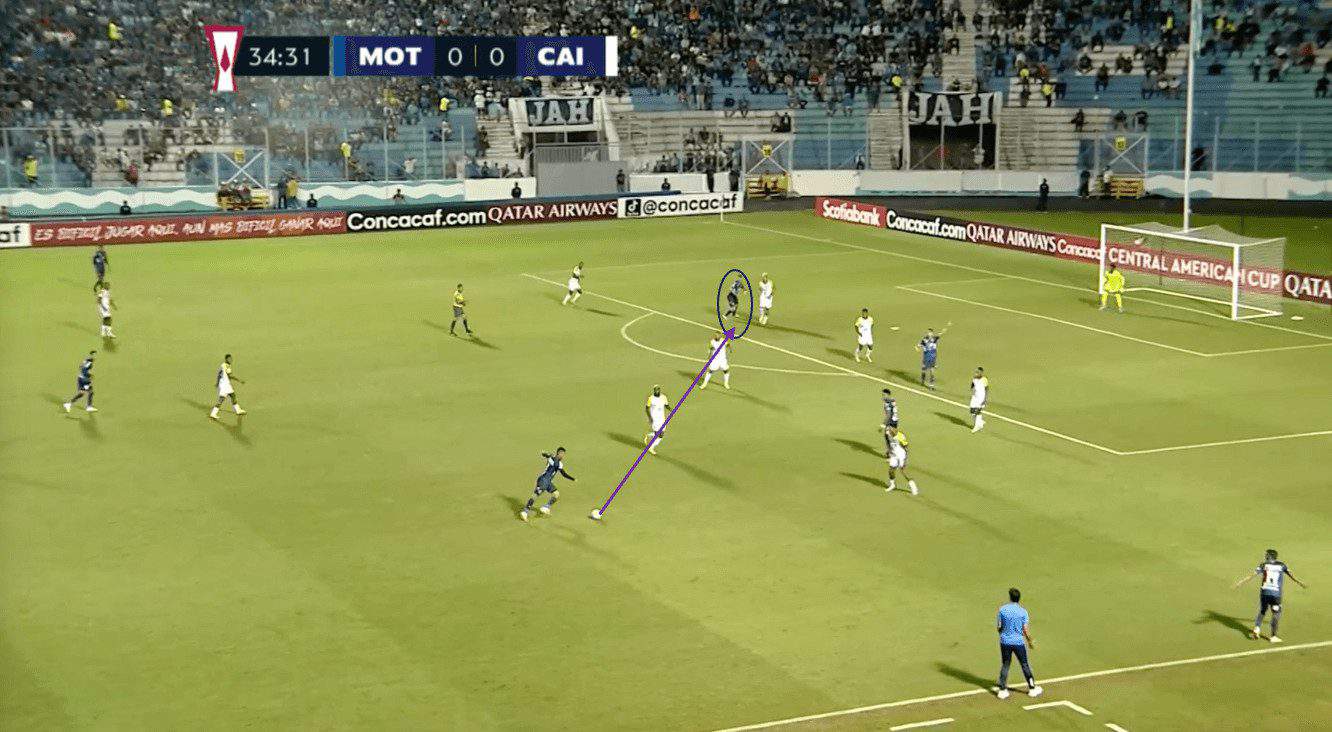
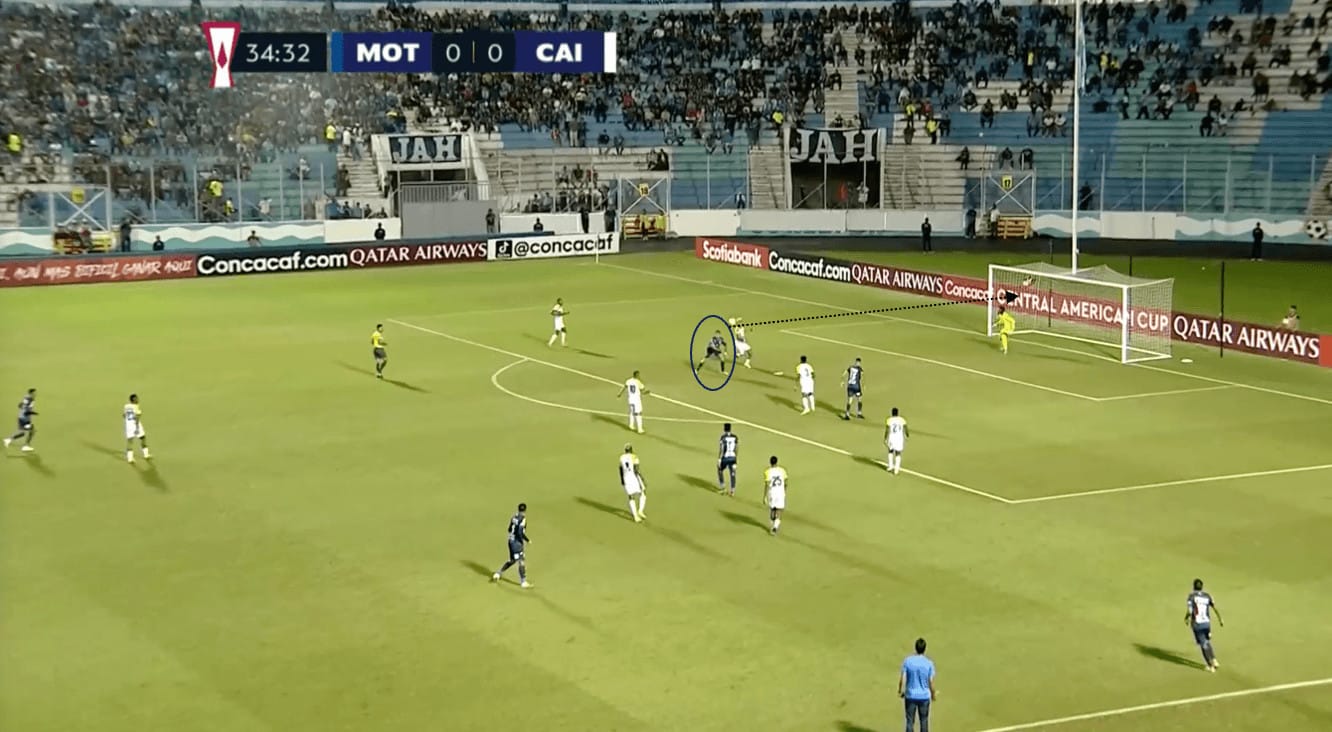
Auzmendi has an excellent knowledge of generating space for himself in the area. He makes subtle movements which allow him to get in front of the defender. Here, he anticipates the cross well and has a beautiful ability to execute powerful headers without leaving the ground. He can judge the ball’s trajectory and utilise his strength to hold off his opponent and then guide the ball goalwards.
By effectively outmanoeuvring the opposing defenders and positioning himself in front of his marker, the forward creates optimal scoring opportunities from crosses, set pieces, and long balls, thus increasing his team’s chances of scoring goals. This ability to outwit his marker and secure advantageous positioning inside the penalty area allows him to become a potent aerial threat during attacking plays.
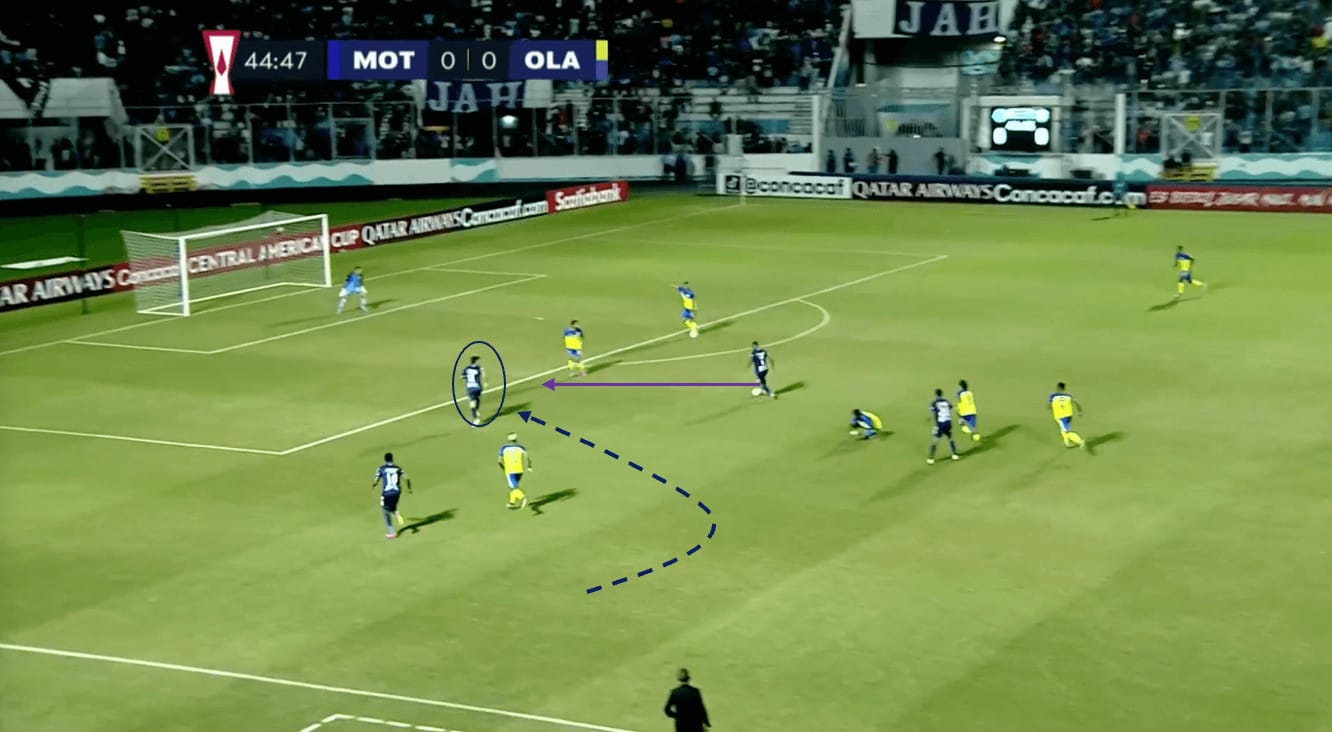
Here, we can see Auzmendi making one of his runs from the left wing. The Motagua forward’s tendency to drift out to the left often forces the opposition’s defensive players to track his movements, thereby creating imbalances in the defensive structure and potentially dragging the opposing centre-backs or full-backs out of position.
Additionally, he possesses a good burst of acceleration, which allows him to exploit gaps and spaces in the central areas of the field. In the example above, we can see that he has taken advantage of the fact that the opposition fullback pushed up incredibly high when they were on the attack. As Motagua regained possession and transitioned quickly, Auzmedi used the space on the left to break forward and then make a run into the area where he was through 1v1 with the goalkeeper.
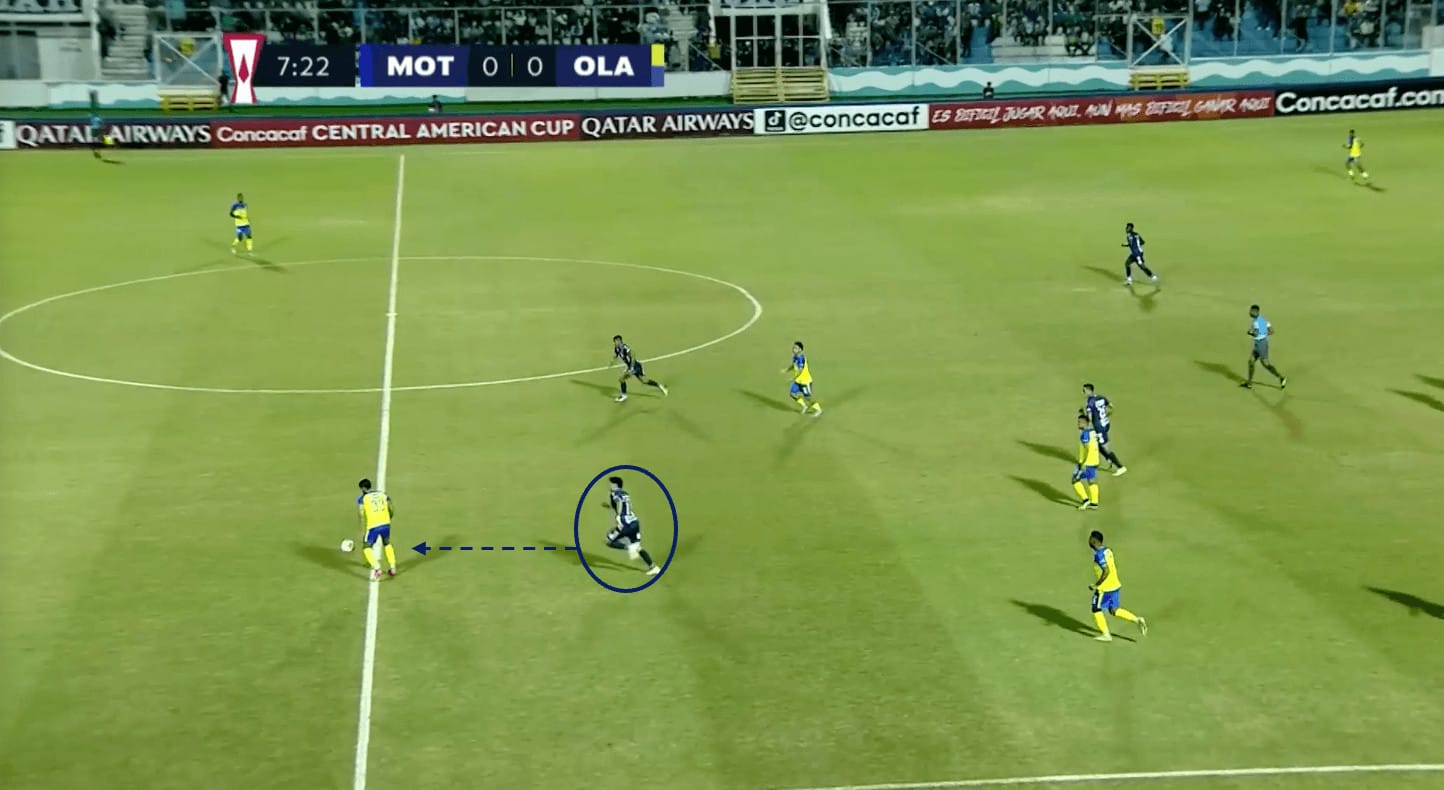
Auzmendi also does his fair share of defensive work. Motagua often utilise a 4-4-2 shape for their defensive structure, mainly in a mid-block, but they do look to press quite often with a PPDA of 8.91 in this year’s Central American Cup competition.
In the example above, we can see Auzmendi leading the press for Motagua as they seek to force their opponents back and prevent them from building an attack. His willingness to press the opposition’s defenders and midfielders disrupts the flow of the opposition’s passing sequences and cuts off passing lanes, which initiates counterattacking opportunities for the Motagua team.
By applying pressure high up the pitch, the striker limits the opposition’s time on the ball and forces them into making hasty decisions and inaccurate passes, increasing the likelihood of being able to intercept the ball. This is vital to Motagua’s defensive play and shows how Auzmendi is willing to lead from the front.
Conclusion
In this analysis, we have looked at three players who have been impressive in the 2023 CONCACAF Central American Cup. We have highlighted attacking midfielder Aarón Suárez and his dynamic style of play that sees him being a constant goal threat for Alajuelense.
We have highlighted Fernán Faerrón and his ball-playing abilities, which have been incredibly useful for Herediano this season. The 23-year-old is a very progressive player who is equally as solid defensively, which makes him an exciting prospect. It is not unthinkable that he may move away from Costa Rican football in the near future.
Furthermore, we have looked into Argentine striker Agustine Auzmendi and seen how his hard-working defensive displays have been vital for Motagua. Coupled with his excellent aerial ability and goal-scoring skills, the 26-year-old is enjoying a solid season in Honduran football.
The first edition of the Central American Cup is showcasing the most talented players in the region who are living up to expectations. Overall, the tournament is proving to be an exhilarating competition to follow.

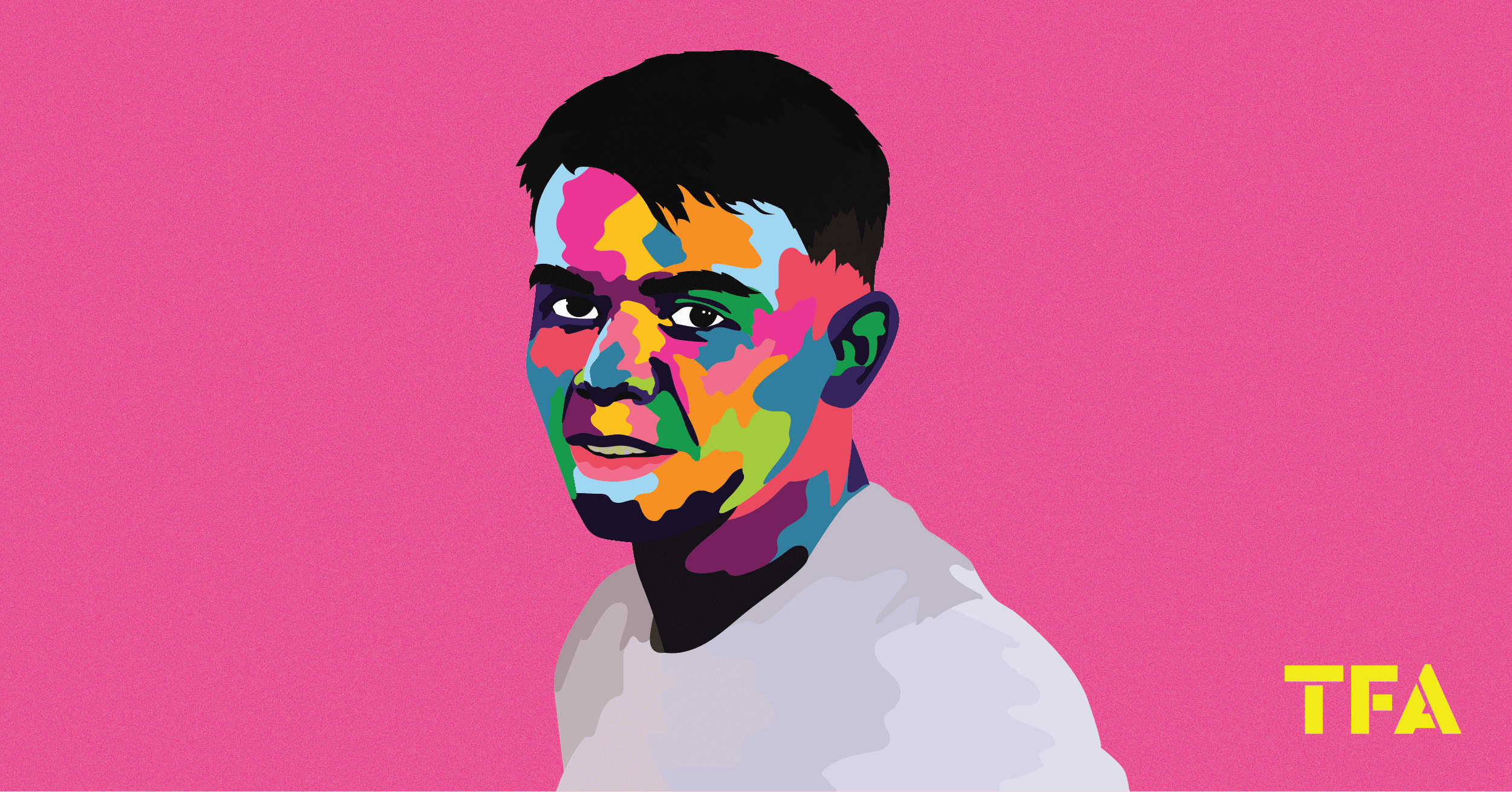



Comments